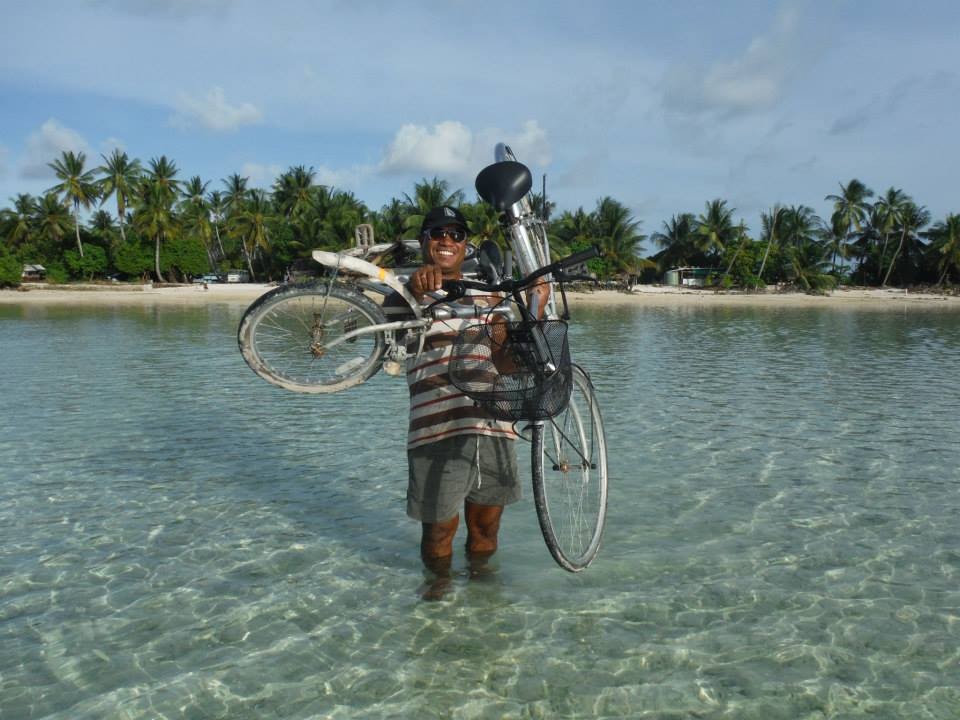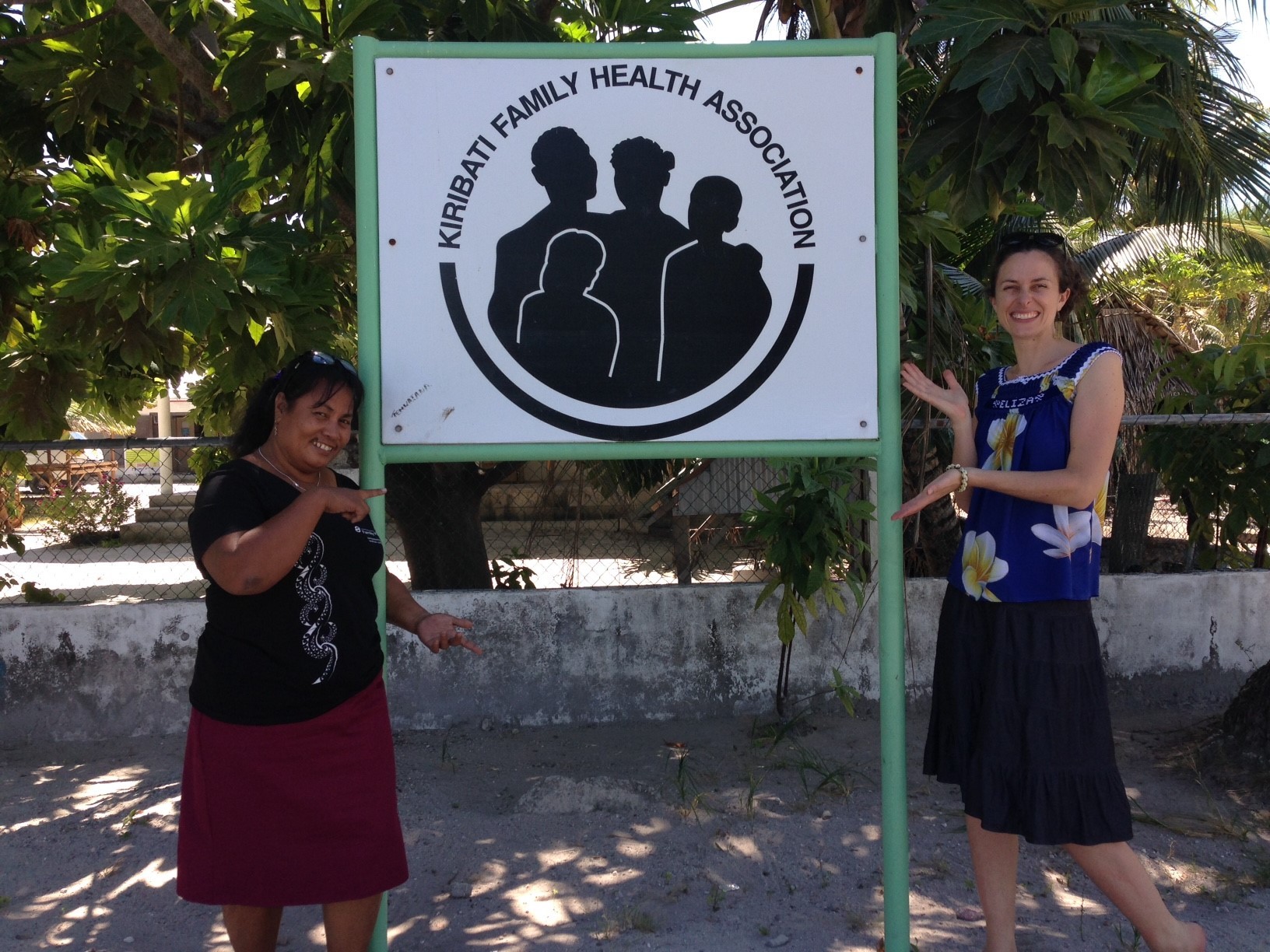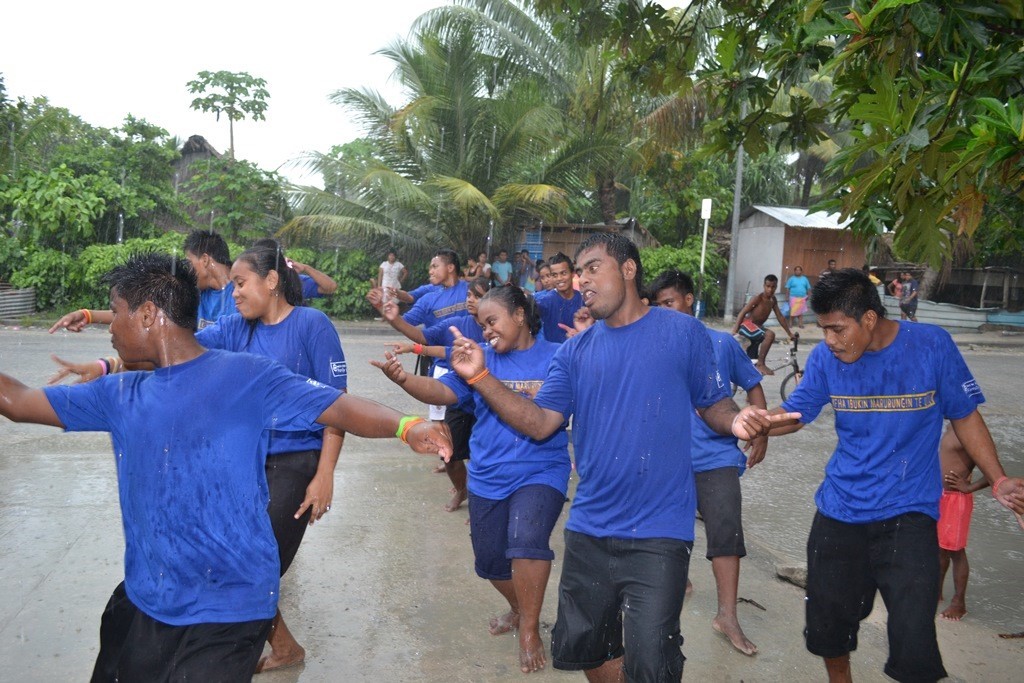Embarking on a journey to a unique destination is a dream for many, and understanding the possibilities is the first step. Can You Travel To Kiribati? Absolutely! SIXT.VN is here to guide you through everything you need to know, ensuring your trip is seamless and unforgettable, providing expert travel advice for your Kiribati adventure. From visa requirements to cultural insights, we will help you explore this Pacific paradise, ensuring you experience the best of island hopping and ecotourism.
1. What Makes Kiribati a Unique Travel Destination?
Kiribati, officially the Republic of Kiribati, is an island nation located in the central Pacific Ocean. It is composed of 33 atolls and islands, of which 21 are inhabited. Straddling the equator, Kiribati is the only country in the world located in all four hemispheres. This makes it a truly unique and geographically diverse destination.
- Geography: Spread across 3.5 million square kilometers, Kiribati offers a vast expanse of pristine waters and untouched landscapes.
- Culture: The I-Kiribati people have a rich cultural heritage, with traditions centered around family, community, and respect for the environment.
- Tourism: Kiribati is an emerging ecotourism destination, attracting travelers who seek authentic experiences and wish to explore unspoiled natural beauty.
1.1. What’s the Pronunciation of Kiribati?
Kiribati is pronounced “Kiri-bas,” which might be surprising given its spelling. The pronunciation reflects the Gilbertese language, where “ti” is pronounced as “s.”
1.2. Why is Kiribati Called “Kiribati?”
The name “Kiribati” is the Gilbertese adaptation of “Gilberts,” derived from the Gilbert Islands, which were named after British Captain Thomas Gilbert.
1.3. Is Kiribati Safe for Tourists?
Yes, Kiribati is generally considered a safe destination for tourists. Crime rates are low, and the local population is known for its hospitality. However, like any travel destination, it’s important to take precautions:
- Petty Theft: Be mindful of your belongings in crowded areas.
- Water Safety: Exercise caution when swimming or engaging in water sports, as currents can be strong.
- Health: Consult your doctor about necessary vaccinations and health precautions before traveling.
1.4. What Should Visitors Know About Local Customs?
Respect for local customs is paramount when visiting Kiribati. Here are some key cultural considerations:
- Dress Code: Dress modestly, especially in villages. Women should wear skirts or dresses that cover the knees.
- Greetings: Greet people with a smile and a friendly “Mauri” (hello).
- Manners: Remove your shoes before entering someone’s home or a Maneaba (meeting house).
- Photography: Ask for permission before taking photos of people, especially in rural areas.
- Punctuality: I-Kiribati culture has a relaxed approach to time, so be patient and flexible.
2. Planning Your Trip to Kiribati
2.1. What are the Visa Requirements for Kiribati?
Visa requirements for Kiribati depend on your nationality. Many nationalities can enter Kiribati visa-free for a certain period, typically 30 to 90 days. However, it’s crucial to check the specific requirements based on your citizenship.
- Visa-Free Entry: Citizens of many countries, including the EU, USA, Australia, and Canada, can enter Kiribati without a visa for tourism purposes.
- Required Documents: Ensure you have a valid passport with at least six months of validity, proof of onward travel, and sufficient funds to cover your stay.
For detailed and up-to-date visa information, consult the Kiribati Immigration Department or your local embassy.
2.2. What are the Best Times to Visit Kiribati?
The best time to visit Kiribati is during the dry season, which typically runs from June to September. During these months, you can expect:
- Lower Rainfall: Reduced chances of rain, making outdoor activities more enjoyable.
- Pleasant Temperatures: Average temperatures ranging from 24°C to 30°C (75°F to 86°F).
- Calmer Seas: Ideal conditions for snorkeling, diving, and island hopping.
Avoid the wet season, which lasts from November to April, as heavy rainfall and occasional cyclones can disrupt travel plans.
2.3. How Can SIXT.VN Help Plan Your Trip?
SIXT.VN offers a range of services to help you plan your trip to Kiribati:
- Travel Consultation: Personalized travel advice tailored to your interests and preferences.
- Airport Transfers: Seamless and reliable airport pickup and drop-off services.
- Hotel Bookings: Assistance with finding and booking accommodations that suit your budget and location preferences.
- Tour Packages: Curated tour packages that showcase the best of Kiribati, including cultural experiences, ecotourism adventures, and island hopping excursions.
2.4. What Flights are Available to Kiribati?
Flights to Kiribati are limited due to its remote location. The main airport is Bonriki International Airport (TRW) on South Tarawa.
- Fiji Airways: Operates flights from Nadi, Fiji (NAN), to South Tarawa.
- Nauru Airlines: Offers flights from Brisbane, Australia (BNE), to South Tarawa, with a stopover in Nauru (INU).
Connecting flights may be required depending on your departure location. It’s advisable to book flights well in advance due to limited availability.
 Kiribati Arrival
Kiribati Arrival
Kiribati welcomes travelers seeking unique cultural experiences.
3. Exploring the Islands of Kiribati
Kiribati is divided into three main island groups: the Gilbert Islands, the Phoenix Islands, and the Line Islands. Each group offers unique attractions and experiences.
3.1. Gilbert Islands
The Gilbert Islands are the most populated and developed group within Kiribati. They include the capital, South Tarawa, and offer a blend of cultural and natural attractions.
- South Tarawa: The capital, offering cultural sites, markets, and historical landmarks.
- North Tarawa: A more traditional island with villages showcasing I-Kiribati culture.
- Abemama: Known for its historical significance and scenic beauty.
3.2. Phoenix Islands
The Phoenix Islands are a protected area and a UNESCO World Heritage Site, renowned for their pristine ecosystems and diverse marine life.
- Phoenix Islands Protected Area (PIPA): One of the largest marine protected areas in the world, offering exceptional diving and snorkeling opportunities.
- Rawaki Island: A significant seabird breeding site.
3.3. Line Islands
The Line Islands are divided into two groups: the Northern Line Islands and the Southern Line Islands. They are known for their remote beauty and unique ecosystems.
- Kiritimati (Christmas Island): The largest atoll in the world, offering exceptional birdwatching and fishing opportunities.
- Tabuaeran (Fanning Island): Known for its lush vegetation and pristine beaches.
- Teraina (Washington Island): Features a freshwater lake and abundant wildlife.
4. What Activities Can You Enjoy in Kiribati?
Kiribati offers a range of activities that cater to different interests, from cultural immersion to outdoor adventures.
4.1. Cultural Experiences
- Visit Maneaba: Attend a traditional gathering or event at a Maneaba (meeting house) to experience I-Kiribati culture firsthand.
- Weaving Workshops: Participate in a weaving workshop to learn traditional I-Kiribati weaving techniques.
- Local Markets: Explore local markets to sample local foods and purchase handmade crafts.
4.2. Water Sports
- Diving and Snorkeling: Explore the vibrant coral reefs and diverse marine life around Kiribati’s atolls.
- Fishing: Enjoy sport fishing or traditional fishing with local fishermen.
- Kayaking and Paddleboarding: Explore the calm lagoons and coastline by kayak or paddleboard.
4.3. Ecotourism Adventures
- Birdwatching: Kiribati is a haven for birdwatchers, with numerous species of seabirds and migratory birds.
- Island Hopping: Take a boat tour to explore different islands and atolls, each offering unique landscapes and ecosystems.
- Nature Walks: Explore the natural beauty of Kiribati’s islands on guided nature walks.
 Kiribati Dance
Kiribati Dance
Experience the vibrant culture with traditional dance performances.
5. Sustainable Tourism in Kiribati
Kiribati faces significant environmental challenges, including rising sea levels and climate change. As a traveler, you can play a role in promoting sustainable tourism practices.
5.1. What Can Travelers Do to Minimize Environmental Impact?
- Reduce Waste: Minimize your use of single-use plastics and dispose of waste responsibly.
- Conserve Water and Energy: Be mindful of your water and energy consumption in accommodations.
- Respect Marine Life: Avoid touching or disturbing coral reefs and marine animals.
- Support Local Businesses: Purchase locally made products and support local tour operators.
- Offset Your Carbon Footprint: Consider offsetting your carbon emissions from flights by donating to environmental organizations.
5.2. How Does SIXT.VN Support Sustainable Tourism?
SIXT.VN is committed to promoting sustainable tourism practices in Kiribati by:
- Partnering with Eco-Friendly Accommodations: Working with hotels and resorts that prioritize sustainability.
- Promoting Responsible Tour Operators: Supporting tour operators who adhere to sustainable tourism principles.
- Educating Travelers: Providing travelers with information on how to minimize their environmental impact.
- Supporting Local Communities: Contributing to community-based tourism initiatives that benefit local residents.
6. Understanding the Challenges Facing Kiribati
6.1. What is Climate Change Doing to Kiribati?
Kiribati is one of the countries most vulnerable to the impacts of climate change. Rising sea levels, coastal erosion, and extreme weather events pose significant threats to the nation’s environment and economy.
- Rising Sea Levels: Threaten to submerge low-lying islands and contaminate freshwater sources.
- Coastal Erosion: Damages infrastructure and reduces habitable land.
- Extreme Weather: Cyclones and droughts disrupt agriculture and displace communities.
6.2. What is Kiribati Doing to Combat Climate Change?
Despite its limited resources, Kiribati is actively engaged in efforts to combat climate change.
- International Advocacy: Advocating for stronger global climate action at international forums.
- Adaptation Measures: Implementing adaptation strategies such as building seawalls and promoting drought-resistant crops.
- Relocation Planning: Exploring options for relocating communities to higher ground or other countries if necessary.
6.3. How Can Tourists Support the Efforts of Kiribati?
Tourists can support Kiribati’s efforts to combat climate change by:
- Raising Awareness: Sharing information about the challenges facing Kiribati with friends and family.
- Supporting Conservation Projects: Donating to organizations that are working to protect Kiribati’s environment.
- Engaging in Responsible Tourism: Practicing sustainable tourism practices that minimize environmental impact.
7. What to Pack for Your Trip to Kiribati
Packing appropriately for your trip to Kiribati will ensure you are comfortable and prepared for the climate and cultural norms.
7.1. Essential Clothing
- Lightweight and Breathable Fabrics: Pack clothing made from cotton, linen, or other breathable fabrics to stay cool in the tropical climate.
- Modest Attire: Bring skirts or dresses that cover the knees for women, and shirts that cover the shoulders for both men and women.
- Swimwear: Pack a swimsuit for swimming and snorkeling, but avoid wearing bikinis in public areas.
- Sarong: A versatile item that can be used as a skirt, dress, or cover-up.
7.2. Footwear
- Sandals or Flip-Flops: Essential for everyday wear.
- Water Shoes: Protect your feet when swimming or walking on rocky beaches.
- Walking Shoes: For hiking or exploring inland areas.
7.3. Accessories
- Sunscreen: High SPF sunscreen to protect your skin from the strong tropical sun.
- Hat: A wide-brimmed hat to shield your face and neck from the sun.
- Sunglasses: Protect your eyes from the glare of the sun.
- Insect Repellent: To ward off mosquitoes and other insects.
- Reusable Water Bottle: Stay hydrated and reduce plastic waste.
- Travel Adapter: Kiribati uses Australian-style plugs (Type I).
7.4. Other Essentials
- First-Aid Kit: Include essentials such as antiseptic wipes, bandages, pain relievers, and any personal medications.
- Camera: Capture the stunning landscapes and cultural experiences of Kiribati.
- Dry Bag: Protect your electronic devices and valuables from water damage.
- Books and Entertainment: For downtime during travel or relaxation.
8. Where to Stay in Kiribati
Accommodations in Kiribati range from basic guesthouses to comfortable hotels and resorts.
8.1. South Tarawa
- Betio Lodge: Offers comfortable rooms and a convenient location in Betio.
- Mary’s Motel: Provides budget-friendly accommodations in a central location.
- Otintai Hotel: Features modern amenities and stunning ocean views.
8.2. Other Islands
- Kiritimati (Christmas Island): The Captain Cook Hotel and Ikari House offer comfortable accommodations and access to the island’s attractions.
- Abaiang Atoll: Several guesthouses provide basic accommodations and a chance to experience local island life.
8.3. How Can SIXT.VN Help with Hotel Bookings?
SIXT.VN can assist you in finding and booking accommodations that suit your budget and preferences. We offer:
- A Wide Range of Options: From budget-friendly guesthouses to luxurious resorts.
- Expert Recommendations: Personalized recommendations based on your travel style and interests.
- Secure Booking: Secure and reliable booking services with competitive rates.
9. What to Eat and Drink in Kiribati
I-Kiribati cuisine features fresh seafood, local fruits, and traditional dishes influenced by the island’s natural resources.
9.1. Traditional Dishes
- Palusami: Young taro leaves baked in coconut cream.
- Fresh Seafood: Grilled fish, lobster, and shellfish.
- Breadfruit: A staple food that can be boiled, baked, or fried.
- Toddy: A traditional drink made from the sap of the coconut palm.
9.2. Where to Eat
- Local Restaurants: Explore local eateries in South Tarawa for authentic I-Kiribati cuisine.
- Hotel Restaurants: Many hotels offer a variety of international and local dishes.
- Markets: Visit local markets for fresh fruits, vegetables, and snacks.
9.3. What to Drink
- Coconut Water: A refreshing and hydrating drink straight from the coconut.
- Toddy: A traditional alcoholic beverage made from fermented coconut sap.
- Imported Beverages: Sodas, juices, and bottled water are widely available.
 Kiribati Beach
Kiribati Beach
Relax on pristine beaches and enjoy the untouched beauty of Kiribati.
10. Staying Connected in Kiribati
10.1. Internet Access
Internet access in Kiribati is limited, especially in remote areas.
- South Tarawa: Internet cafes and hotels in South Tarawa offer Wi-Fi access, but speeds may be slow.
- Mobile Data: Local mobile providers offer data plans, but coverage can be unreliable.
10.2. Mobile Phones
- Local SIM Card: Purchase a local SIM card to use your mobile phone in Kiribati.
- International Roaming: Check with your mobile provider about international roaming charges before traveling.
10.3. Communication Tips
- Patience: Be patient with slow internet speeds and unreliable mobile coverage.
- Offline Maps: Download offline maps and translation apps before your trip.
- Communicate with Locals: Learn a few basic phrases in I-Kiribati to communicate with locals.
11. Frequently Asked Questions About Traveling to Kiribati
11.1. What is the Currency in Kiribati?
The currency in Kiribati is the Australian Dollar (AUD). Credit cards are accepted in some hotels and larger establishments, but cash is preferred.
11.2. What Languages are Spoken in Kiribati?
The official languages are Gilbertese (I-Kiribati) and English.
11.3. Is Kiribati a Safe Place to Travel Alone?
Yes, Kiribati is generally safe for solo travelers. However, it’s important to take precautions and be aware of your surroundings.
11.4. What Vaccinations Do I Need for Kiribati?
Consult your doctor about recommended vaccinations and health precautions before traveling to Kiribati.
11.5. What Time Zone is Kiribati In?
Kiribati spans three time zones: UTC+12:00, UTC+13:00, and UTC+14:00.
11.6. How Can I Get Around Kiribati?
Transportation options include taxis, buses, and boats. Renting a car is possible in South Tarawa.
11.7. What is the Best Way to Experience Local Culture?
Attend local events, visit villages, and engage with I-Kiribati people to experience the local culture.
11.8. What Should I Do in Case of an Emergency?
In case of an emergency, contact the local police or medical authorities. Have travel insurance that covers medical evacuation.
11.9. How Can I Support Local Communities in Kiribati?
Purchase locally made products, support local businesses, and engage in community-based tourism initiatives.
11.10. What Are the Main Tourist Attractions in Kiribati?
Main tourist attractions include South Tarawa, Kiritimati (Christmas Island), the Phoenix Islands Protected Area, and Abemama Atoll.
12. SIXT.VN: Your Partner in Exploring Kiribati
SIXT.VN is dedicated to making your travel experience to Kiribati seamless, enjoyable, and memorable. With our expert guidance and comprehensive services, you can explore this unique destination with confidence.
12.1. Why Choose SIXT.VN?
- Expertise: In-depth knowledge of Kiribati and its unique travel opportunities.
- Personalized Service: Tailored travel advice and support to meet your specific needs.
- Reliability: Trusted and reliable services for airport transfers, hotel bookings, and tour packages.
- Commitment to Sustainability: Promoting responsible tourism practices to protect Kiribati’s environment.
12.2. Contact Us
Ready to start planning your trip to Kiribati? Contact SIXT.VN today!
- Address: 260 Cau Giay, Hanoi, Vietnam
- Hotline/WhatsApp: +84 986 244 358
- Website: SIXT.VN
Let SIXT.VN be your guide to unlocking the wonders of Kiribati, ensuring a journey filled with unforgettable experiences and cherished memories. Your adventure awaits!



